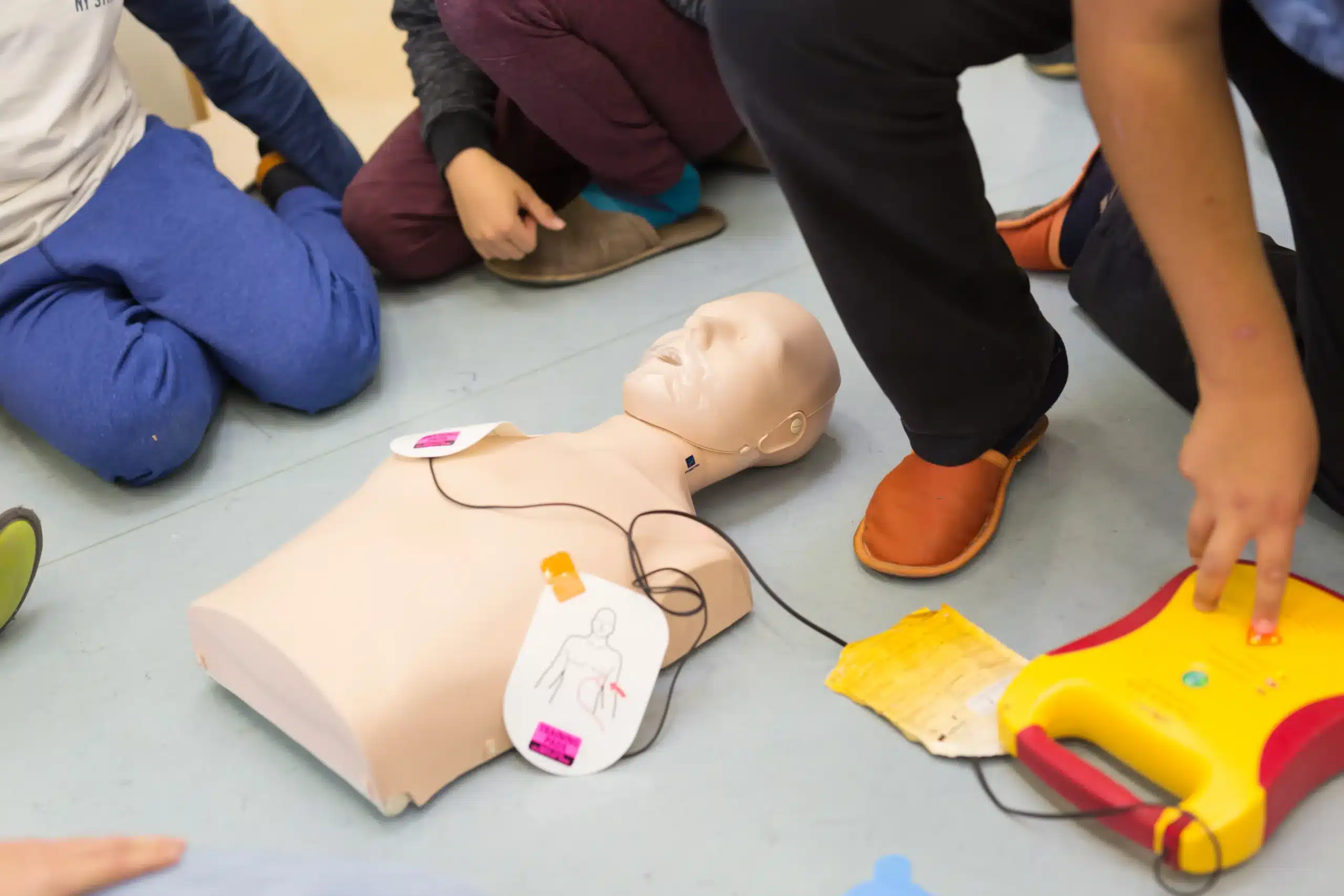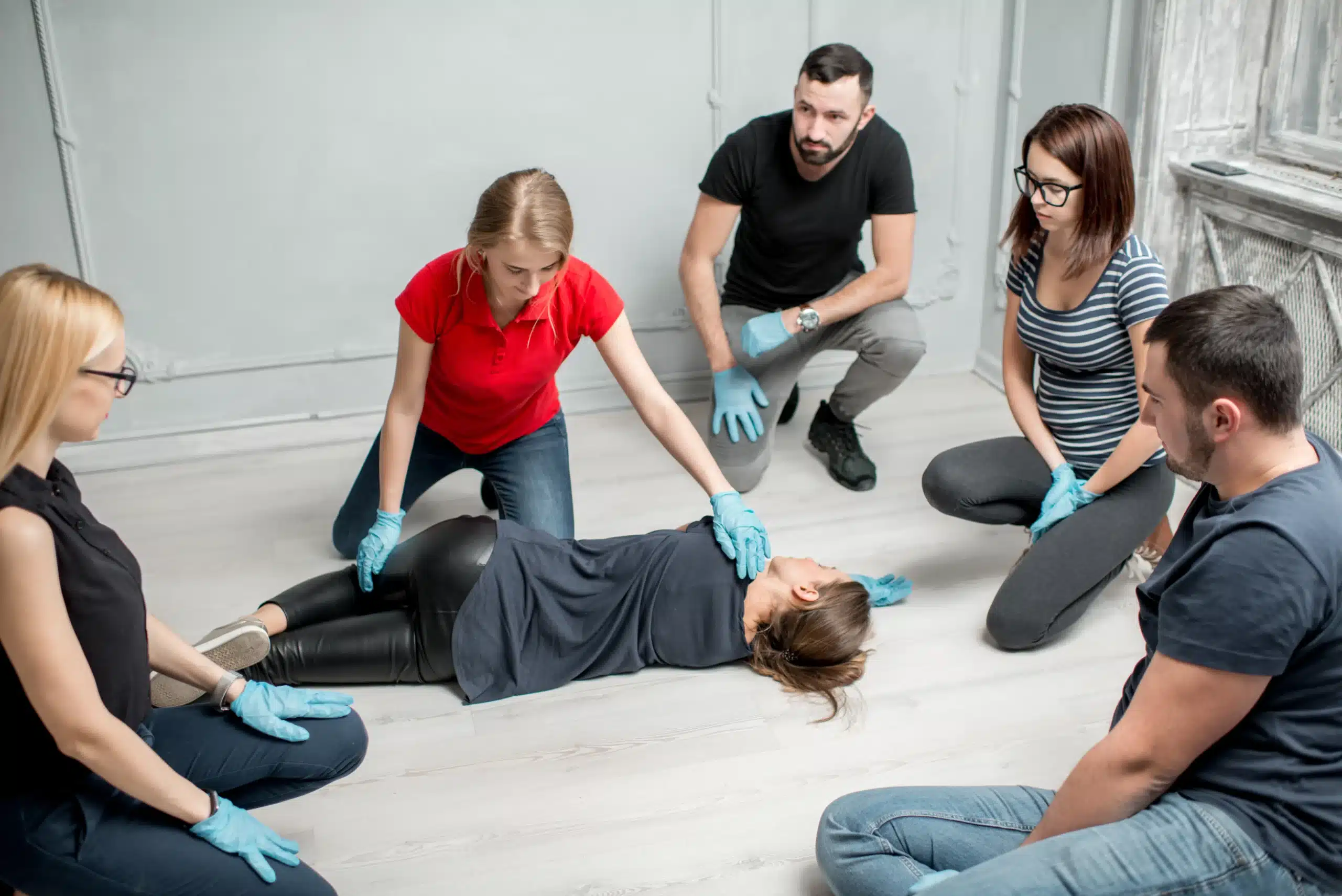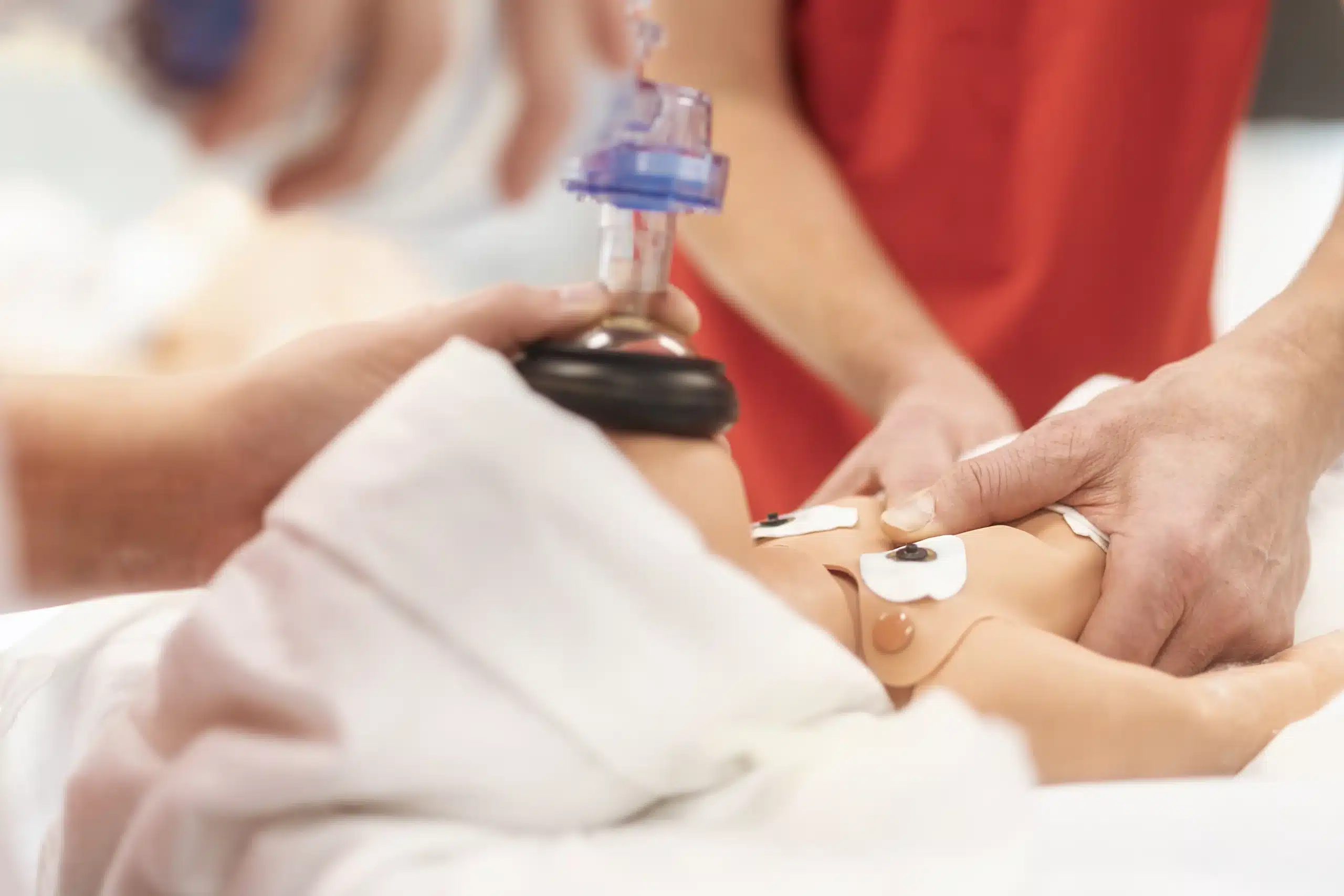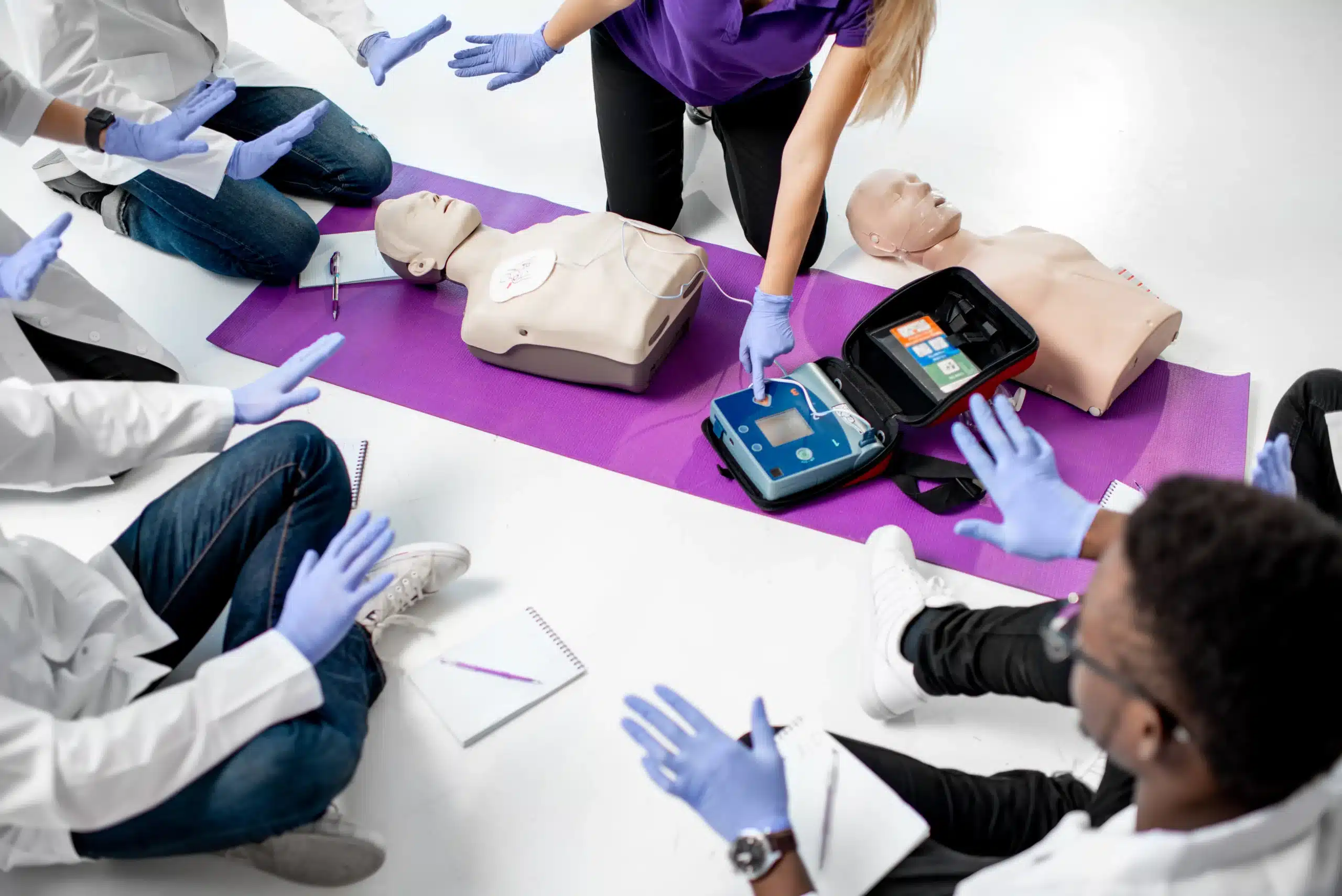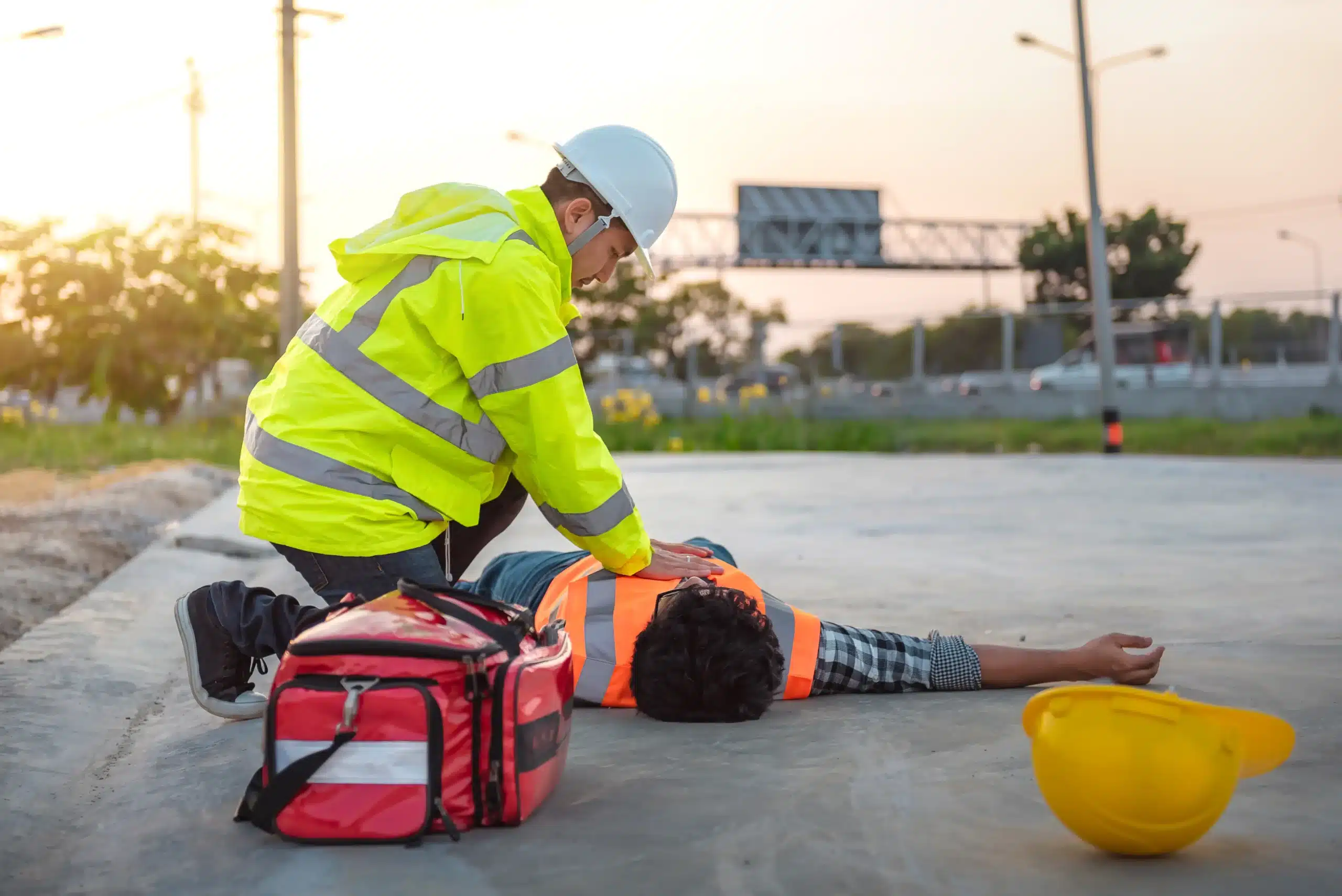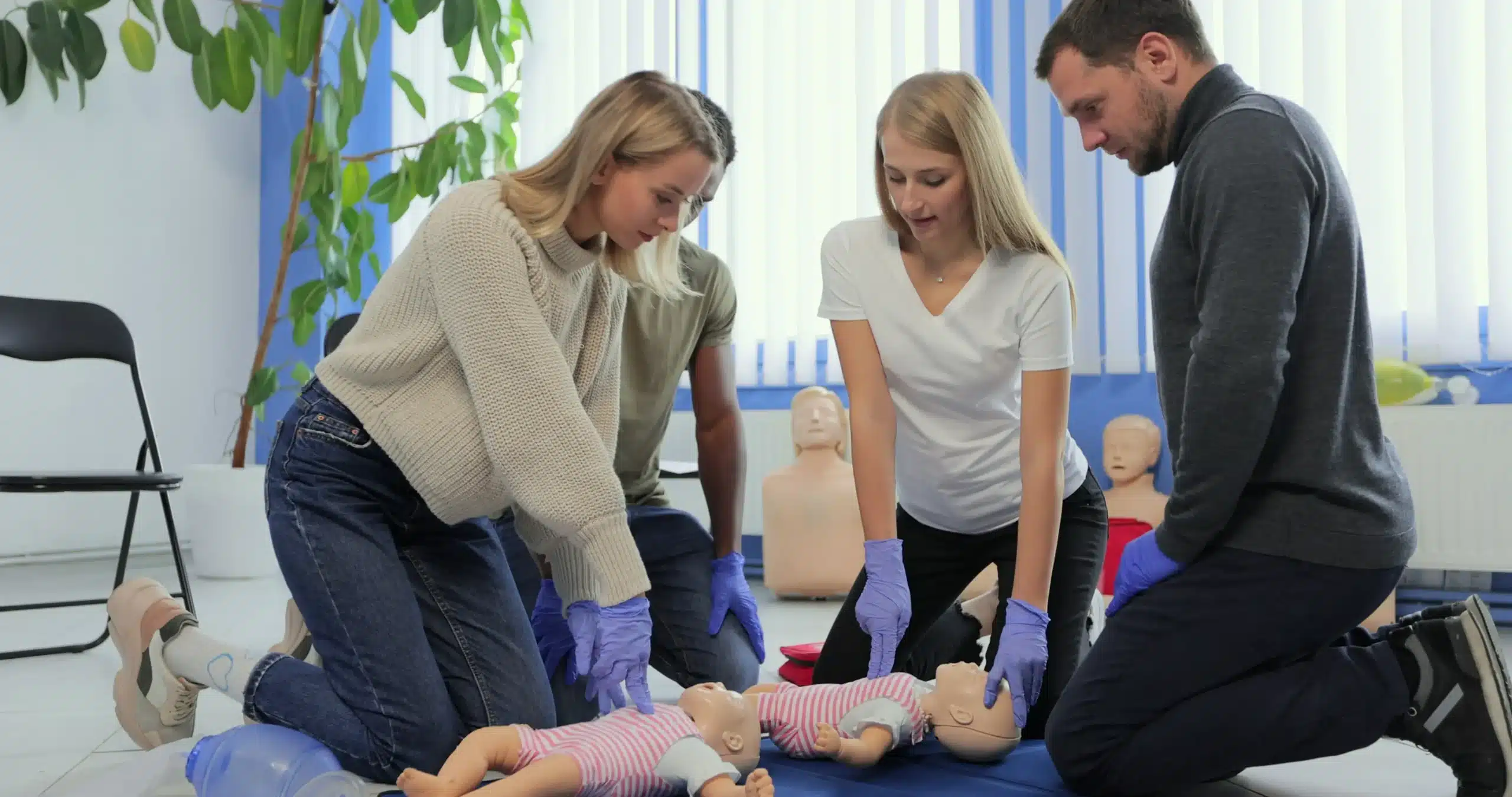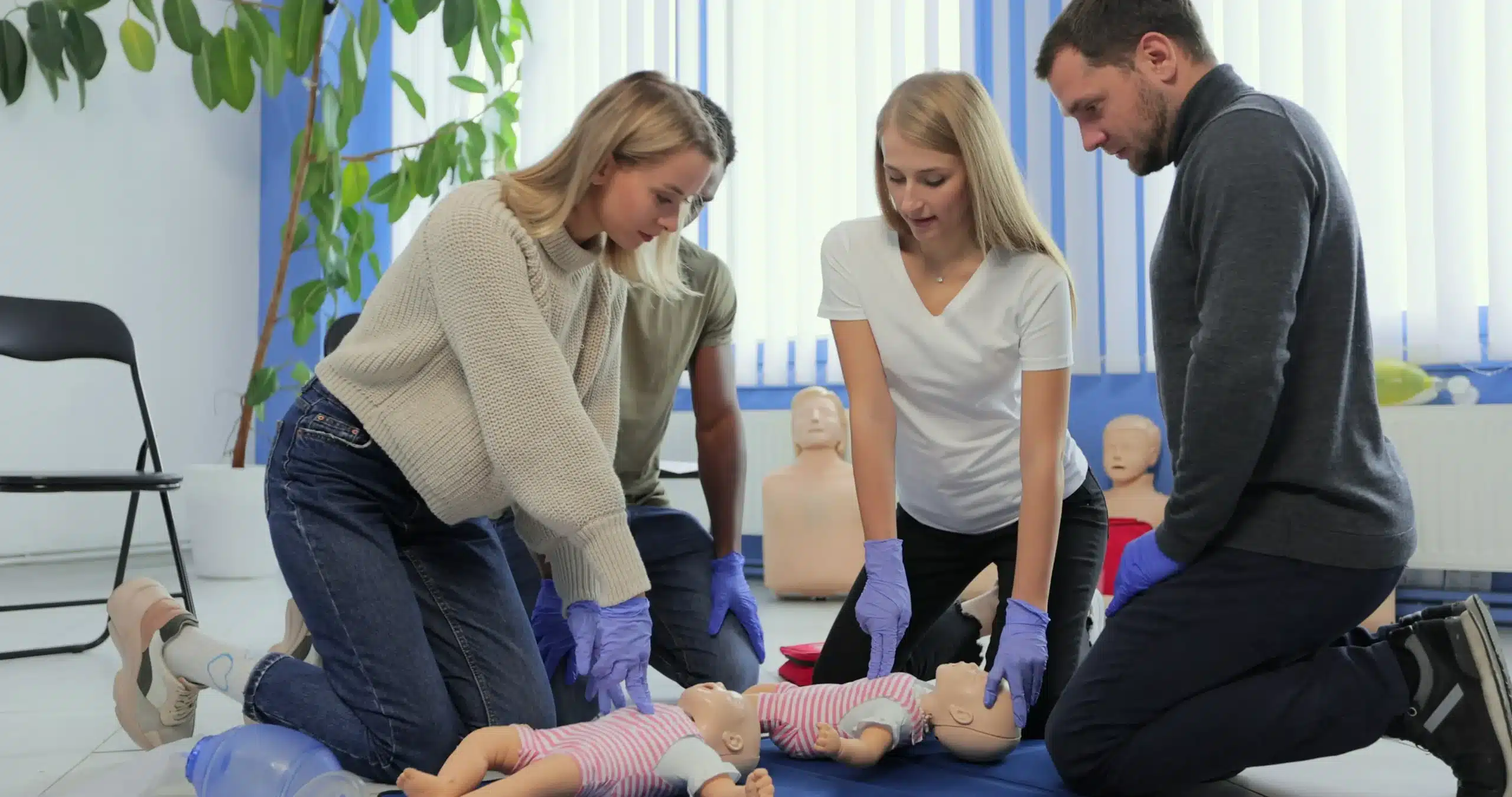From scraped knees to more serious incidents, childhood is full of little adventures—and sometimes, unexpected emergencies. Being prepared to handle these situations is a top priority for any parent, caregiver, or professional working with children. This guide explores the essential aspects of pediatric CPR and first-aid in Oakland, providing you with the knowledge and resources to respond effectively in a crisis. We’ll cover the key skills you’ll learn, where to find reputable training programs in Oakland, and how to make the most of your training experience.
Key Takeaways
- Be prepared to help children in need: Learning pediatric CPR and first aid equips you with the skills to respond confidently to medical emergencies, creating a safer environment for kids in your community.
- Find a course that fits your life: Pediatric CPR and first-aid training is readily available through various organizations and often includes flexible scheduling options like blended learning.
- Invest in skills that make a difference: Getting certified provides lasting benefits, from the peace of mind of being prepared to enhanced job prospects in childcare settings. Stay current by renewing your certification every two years.
What is Pediatric CPR and First-Aid?
Knowing what to do in a medical emergency involving a child can make all the difference. Pediatric CPR and first-aid are specialized skills designed to help infants and children facing breathing or cardiac emergencies, injuries, and sudden illnesses. These skills empower you to respond effectively until professional medical help arrives.
Why Pediatric Emergency Response Matters
When more people in a community are trained in pediatric first aid, it creates a safer environment for kids. Think about it: children are constantly exploring, playing, and pushing boundaries, making them more prone to accidents and injuries. Having trained individuals nearby—whether at a park, school, or home—increases the chances of a quick and appropriate response in a crisis. This preparedness can significantly impact a child’s outcome. As MyCPR NOW points out in their article on pediatric first aid, a community knowledgeable in these skills becomes a safer place for children to thrive.
Key Differences: Adult vs. Pediatric CPR
While some basic principles overlap, pediatric CPR and first-aid differ significantly from adult techniques. Children’s bodies are still developing, and their physiology responds differently to emergencies. For example, the methods for checking for a pulse or delivering chest compressions are adapted to a child’s smaller size and delicate structure. Also, pediatric first aid emphasizes emotional support, which is crucial for calming a frightened child and their caregivers. This focus on emotional care, alongside the physical techniques, is a key differentiator in pediatric first aid, as highlighted by MyCPR NOW.
Debunking Pediatric CPR and First-Aid Myths
Several misconceptions can discourage people from seeking pediatric CPR and first-aid training. One common myth is the requirement to perform mouth-to-mouth resuscitation on a stranger. In reality, you’re statistically more likely to use CPR on someone you know—a family member, friend, or colleague, as explained in this article on CPR myths. Another misconception is that these skills are too complex to learn. Modern training programs are designed to be straightforward and accessible, equipping anyone with the confidence to act in an emergency. Dispelling these myths, as discussed in this article on CPR misconceptions, encourages more people to get trained and be prepared, leading to better outcomes for children in emergencies.
Find Top Pediatric CPR & First-Aid Classes in Oakland
Finding the right pediatric CPR and first-aid class can feel overwhelming, but several reputable organizations and training centers in Oakland offer excellent programs. Here are a few places to start your search:
Safety Training Seminars
Safety Training Seminars offers a variety of American Heart Association (AHA) courses, including pediatric CPR and first-aid certification. They focus on providing high-quality, affordable training in a convenient Oakland location. Their commitment to low prices and group discounts makes them an attractive option for individuals and organizations. You can explore their BLS course, which covers pediatric CPR, as well as their stand-alone first-aid training. They also offer ACLS and PALS certification for healthcare providers.
American Heart Association Courses
The AHA itself offers a range of courses, often partnering with local training centers. You can easily find a class on their website, filtering by location and course type. This ensures you’re receiving training that meets the AHA’s rigorous standards.
Red Cross Offerings
The American Red Cross is another well-respected provider of first-aid and CPR training. They offer various courses, including those specifically designed for pediatric care. Visit their website to explore pediatric first-aid and CPR options in Oakland.
Local Hospitals & Community Centers
Many local hospitals and community centers in Oakland also offer pediatric CPR and first-aid training. Check with hospitals like UCSF Benioff Children’s Hospital Oakland or Alta Bates Summit Medical Center, or explore options at your local YMCA. These community resources often provide convenient and cost-effective training. For childcare providers, the Loss Prevention Group offers specialized pediatric first-aid and CPR certification designed to meet licensing requirements.
What Happens in Pediatric CPR & First-Aid Training?
Pediatric CPR and first-aid training gives you the skills to handle emergencies involving infants and children. It’s a hands-on learning experience covering a range of essential skills. Let’s take a closer look at what these courses entail.
Learn Essential Skills
You’ll learn to assess a child’s condition, recognize distress, and provide appropriate care. This includes CPR techniques tailored for infants and children, covering chest compressions, rescue breaths, and airway management. The training also emphasizes clearing airway obstructions—a critical skill for responding to choking. You’ll learn the differences between managing an obstruction in an infant versus a child, preparing you to act quickly and effectively in various emergencies.
Practice with Manikins
Hands-on practice is key to pediatric CPR and first-aid training. You’ll work with realistic infant and child manikins to develop muscle memory and confidence in performing CPR. This helps you become comfortable with the correct hand placements, compression depth, and ventilation techniques. Repeated practice simulates the pressure of a real emergency, ensuring you can perform these life-saving skills effectively when needed. For more insights into these practical exercises, check out Adams Safety Training.
Simulate Real-Life Scenarios
Beyond technical skills, training often involves simulated scenarios. These recreate common childhood emergencies, like choking, allergic reactions, and near-drowning incidents. Working through these scenarios in a controlled environment builds your critical thinking and decision-making skills under pressure. This prepares you to respond confidently to various situations and provide effective care. MyCPR NOW discusses the value of scenario-based training.
Manage Childhood Injuries & Illnesses
Pediatric first-aid training goes beyond CPR to address common childhood injuries and illnesses. You’ll learn to manage cuts, burns, fractures, and other injuries, as well as recognize and respond to allergic reactions, fever, seizures, and other medical emergencies. While the focus is immediate care, the training also emphasizes when to seek professional medical help. Metropolitan Pediatrics offers additional information on pediatric first aid.
Use an AED and Other Equipment
Many courses include training on using an automated external defibrillator (AED). You’ll learn to operate an AED safely and effectively on a child in cardiac arrest. This covers recognizing cardiac arrest, proper AED placement, and following the device’s prompts. You’ll also become familiar with other first-aid equipment, like bandages, splints, and breathing barriers. The National Safety Council provides further details on AED training.
Get Certified: Process & Course Selection
Getting certified in Pediatric CPR and First Aid is straightforward. CPR Classes Oakland makes it easy to sign up for a class and get your certification quickly. Here’s what you need to know about the process and choosing the right course:
Steps to Certification
The certification process typically involves a course that combines classroom instruction and hands-on practice. You’ll learn essential skills and techniques for responding effectively in pediatric emergencies. Successful completion of the course and skills testing leads to certification. Safety Training Seminars offers a streamlined process, getting you certified and ready to help quickly. Check out their low price guarantee to see how affordable it can be.
Certification Duration & Renewal
CPR and First Aid certifications are generally valid for two years. To maintain your skills and stay current with the latest guidelines, you’ll need to renew your certification. This ensures you’re always prepared to provide the best possible care. Safety Training Seminars offers convenient renewal courses to simplify this process.
Choose the Right Course
Selecting the right course is crucial. Look for a program covering essential skills like rescue breaths, chest compressions, AED usage, and handling common childhood injuries and illnesses. A comprehensive course will prepare you for various emergencies involving infants, children, and adults. Safety Training Seminars offers a variety of American Heart Association courses designed for these situations. They also offer EMSA Child Care Health & Safety courses.
Instructor Qualifications & Class Size
Choose a course taught by qualified, experienced instructors. A smaller class size can also be beneficial, allowing for more individual attention and opportunities to ask questions. Safety Training Seminars is known for its excellent customer service and experienced instructors. Consider their group discounts if you’re attending with a group.
Blended Learning Options
For busy schedules, blended learning options combine online coursework with in-person skills sessions. This flexible approach lets you learn at your own pace and complete the online portion on your schedule, while still receiving the hands-on practice you need. Check with Safety Training Seminars about their course formats to see if they offer blended learning.
Costs & Benefits of Pediatric CPR & First-Aid Courses
Knowing the costs and benefits associated with pediatric CPR and first-aid training can help you make an informed decision. It’s an investment in yourself and the children in your life.
Oakland Pricing
Pediatric CPR and first-aid courses are offered by a variety of providers throughout Oakland. Safety Training Seminars, for example, offers American Heart Association courses across over 60 cities in Northern California, including CPR, BLS, ACLS, PALS, and first-aid training. You can find additional courses and providers through resources like Bay Area CPR. Course prices will vary depending on the provider, the type of certification, and whether you choose individual or group training.
Group Discounts & Special Offers
Look for opportunities to save on training costs. Many providers offer discounts for group classes. Safety Training Seminars frequently has promotions available on sites like Groupon. Bringing a friend or family member can sometimes unlock additional discounts, such as those offered by American First Responder. These savings can make training more accessible.
Long-Term Benefits for Caregivers
The benefits of pediatric CPR and first-aid training extend far beyond the classroom. These skills empower caregivers to respond confidently in emergencies, creating a safer environment for children. MyCPR NOW discusses how a community’s knowledge of pediatric first aid makes for safer environments where kids can learn and play. Knowing you can handle a crisis provides invaluable peace of mind.
Improve Employability in Childcare
For those working or planning to work in childcare, pediatric CPR and first-aid certification is a significant asset. These credentials can improve your job prospects and demonstrate your commitment to child safety. First Response Safety Training points out that thousands of children experience out-of-hospital cardiac arrests each year, and many parents lack confidence in performing CPR, making these skills highly sought after by employers.
Make the Most of Your Training
Getting certified in pediatric CPR and first aid is a rewarding experience, but showing up prepared makes a difference. Here’s how to maximize your training, from pre-course prep to staying up-to-date on the latest guidelines.
What to Bring
Keep it simple. A notebook and pen are helpful for jotting down notes, though many courses offer digital materials. Dress comfortably, as you’ll be practicing hands-on skills. Bring a water bottle to stay hydrated, especially during longer sessions.
Pre-Course Study Materials
Many organizations, like the Red Cross, offer online resources and manuals. Reviewing these before class can familiarize you with key concepts and techniques, giving you a head start. Even a quick overview can make the in-person training more effective.
Flexible Scheduling
Juggling work, family, and other commitments? Look for courses with flexible scheduling. The Red Cross offers various class times and formats to accommodate busy schedules. Weekend and evening options are often available. Safety Training Seminars also offers flexible scheduling, including group discounts for workplaces or families.
Post-Training Resources & Support
Your learning doesn’t end when you leave the classroom. Reputable training providers offer resources to help you maintain your skills. Look for organizations that provide access to online refreshers, skill videos, or ongoing support. This continued learning can boost your confidence and ensure you’re always ready to help.
Refresh Your Skills Regularly
Guidelines and best practices change, so regular refreshers are essential. Most certifications, like those from the American Heart Association, are valid for two years. Plan to recertify to stay current and confident in your abilities. Regular practice ensures you can respond effectively in a real emergency.
Related Articles
- The Importance of Workplace CPR & First-Aid Training
- Why CPR is Crucial in Healthcare
- CPR Certification in Oakland: Your Guide – Oakland CPR Classes
- CPR Myths Exposed: Truth Behind Common Misconceptions
- CPR & First-aid Classes in Oakland, CA – Oakland CPR Classes
Frequently Asked Questions
Is pediatric CPR drastically different from adult CPR?
Yes, there are important differences. A child’s body is still developing, so techniques like chest compressions and rescue breaths are adjusted to their smaller size and unique physiology. Pediatric first aid also places a greater emphasis on providing emotional support, which is essential for calming a frightened child (and their parents!).
Where can I find reliable pediatric CPR and first-aid training in Oakland?
Several excellent options exist in Oakland. Safety Training Seminars offers various American Heart Association (AHA) certified courses, including BLS (which covers pediatric CPR) and first aid. The AHA and Red Cross also offer courses, often in partnership with local training centers. Check with hospitals like UCSF Benioff Children’s Hospital Oakland or Alta Bates Summit Medical Center, or your local YMCA or community center for additional options.
What if I’m too busy to attend a traditional class?
Many providers understand busy schedules and offer blended learning. These courses combine online learning with in-person skills sessions. You can work through the online portion at your own pace and then attend a shorter in-person session to practice your skills. Check with your chosen training provider to see if they offer this flexible format.
How much does pediatric CPR and first-aid certification cost, and how long does it last?
Costs vary depending on the provider and the type of course. Look for providers like Safety Training Seminars that offer group discounts or check for deals on sites like Groupon. Certifications typically last for two years. Renewal courses are readily available to keep your skills sharp and your certification current.
What will I learn in a pediatric CPR and first-aid class?
You’ll gain essential skills to respond to various emergencies involving infants and children. This includes CPR (chest compressions, rescue breaths, and airway management), how to relieve choking, and managing common childhood injuries like cuts, burns, and fractures. You’ll also learn to recognize and respond to medical emergencies such as allergic reactions, fever, and seizures. Many courses also include AED training. The training emphasizes hands-on practice and often includes simulated scenarios to build your confidence.


